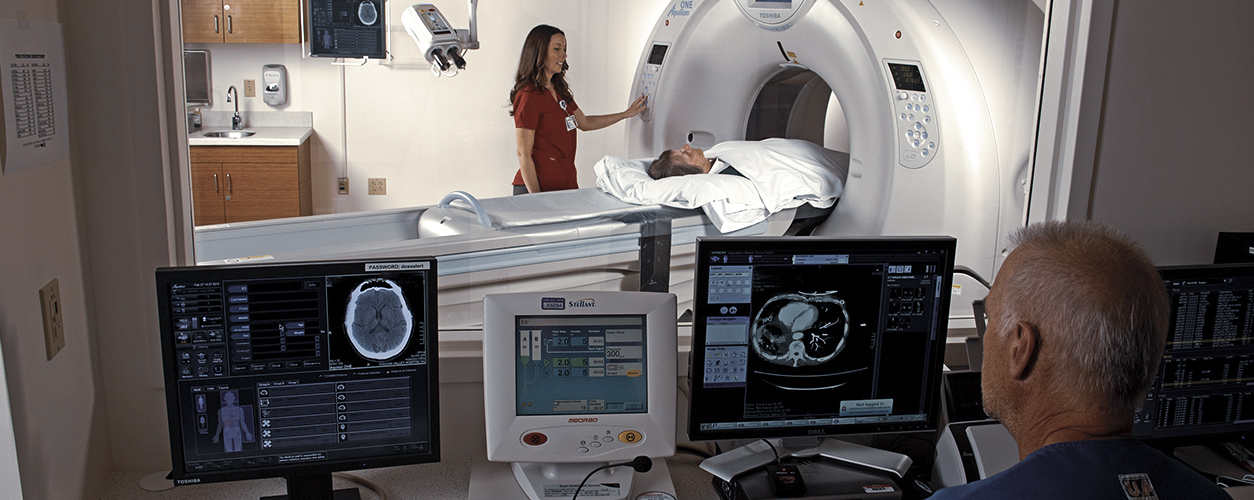
Diagnostic Imaging Services of PVHMC
CT Scanning
Computed Tomography (CT) is also commonly known as Computerized Tomography (CT) or Computed Axial Tomography (CAT). Basically, CT is an advanced x-ray system that generates a number of detailed cross-sectional images of all parts of the body. Studies are routinely performed on the head, spine, chest, abdomen, pelvis, and extremities as well as on the venous and arterial systems within the body. These sophisticated studies are produced by placing the patient on a table and rotating a focused x-ray beam around the patient which captures images from many angles.
Patient Expectation
All CT examinations are performed with the patient changing into a procedure gown and laying on a table that moves on an automated track through the opening of the gantry. The gantry is the device that holds the x-ray tube that will circle around the table. The technologist will explain everything to you prior to starting the examination. The particular procedure that you are having may involve the injection of contrast material through a vein in your arm and the technologist will explain that process to you as well.
During the procedure, you will feel the table move and you will hear the sound of the tube as it rotates around you. The technologist will talk to you through a microphone from the control room during the procedure. It is important that you follow the instructions given by the technologist during the procedure (such as holding your breath when asked) and remaining as still as possible.
Most CT procedures only last a few minutes and you should experience very little if any discomfort during the procedure.
Patient Preparation
Many CT examinations do not require specific patient preparation prior to having the study performed. However, there are examinations that do require specific preparation guidelines and those will be reviewed with you when the examination is scheduled. The preparations are generally dietary restrictions but can involve activities such as drinking oral contrast material prior to the time of your appointment.
Procedure Side Effects / Complications
Side effects can occur during a CT examination. These are generally mild and are related to the contrast material. If you receive an injection of contrast material through a vein in your arm, you may experience a warm sensation throughout your body, the feeling of needing to urinate, and possibly a metallic taste in your mouth – all of which pass fairly quickly. Oral contrast material may cause slight changes in bowel movements which should soon return to normal.
Some patients may experience a complication to the injection of contrast material and develop an allergic reaction. Allergic reactions may result in itching, sneezing, hives, or other allergic symptoms. In more rare cases, the contrast material may trigger anaphylaxis, a life-threatening allergic reaction in which the airway can become swollen enough to restrict breathing. In such cases, emergency treatment is administered immediately.
Patients that have diabetes or other renal diseases may require special care due to the involvement of the kidneys filtering contrast from the bloodstream.
Patients are encouraged to discuss any and all allergies they may have with their physician prior to having a CT scan.
Procedure Follow-up Care
Upon completion of your CT examination, there is generally no follow-up care required.
Scheduling
All radiology procedures are scheduled through our Centralized Scheduling
Department. The highly trained and knowledgeable staff will handle all
aspects of scheduling your radiology procedure and answer any questions
you may have regarding the scheduling or procedure preparation process.
To schedule a radiology procedure you can contact our staff as follows:
Centralized Scheduling:
909.469.9395
Monday – Friday / 8:30 am – 5:00 pm
